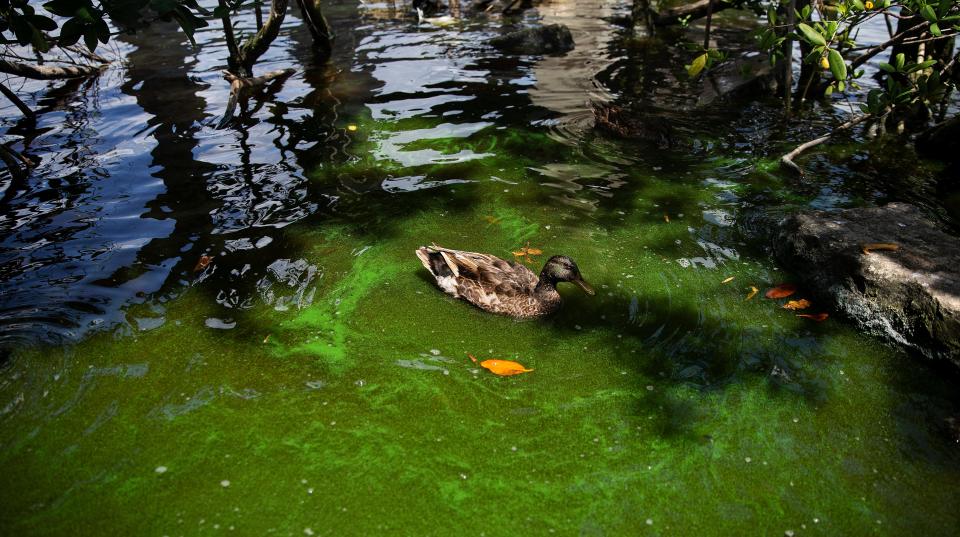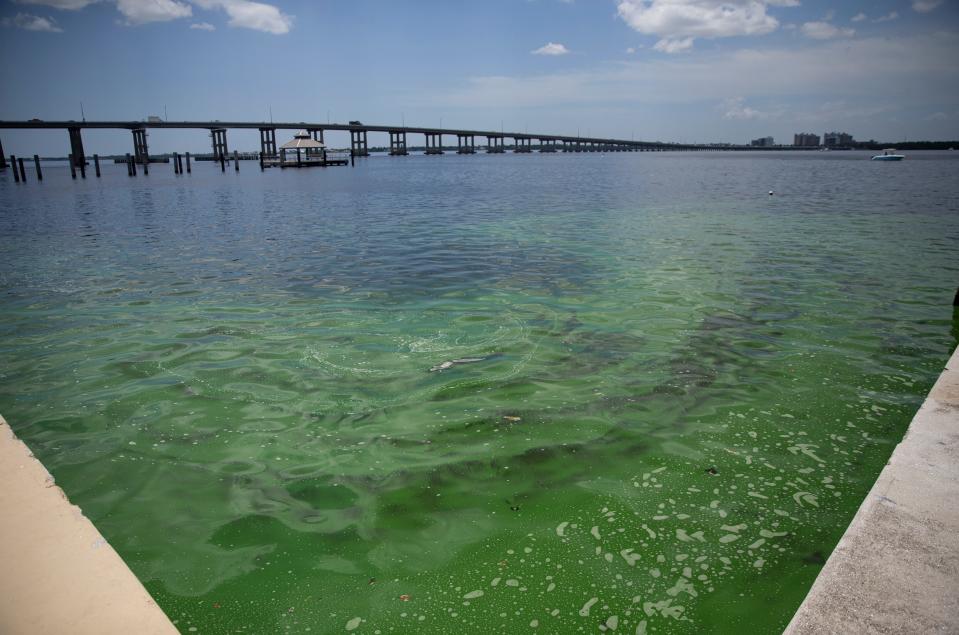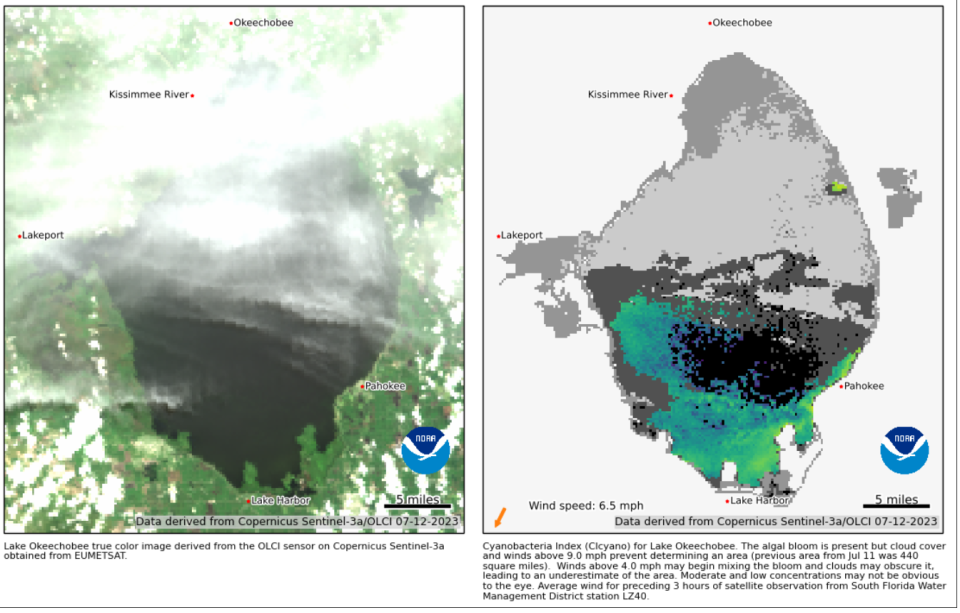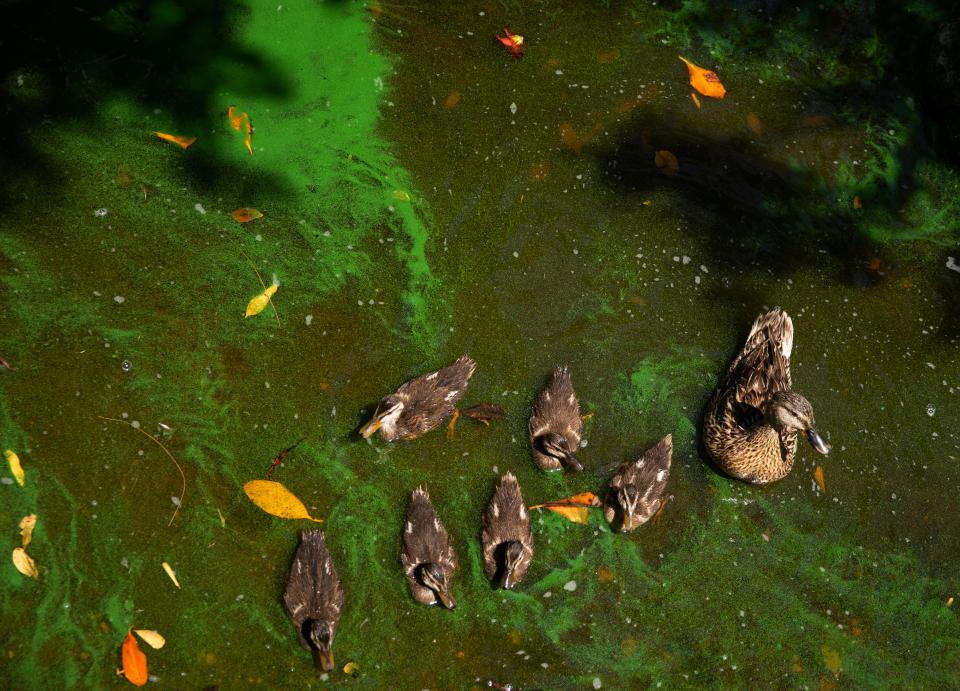Toxic blue-green algae thickening in Caloosahatchee River
A toxic blue-green algae bloom appears to be strengthening its grip on the Caloosahatchee River, as green slicks of the organisms are visible in downtown Fort Myers.
"I've been seeing it around the Edison Bridges and a little downtown," said Calusa Waterkeeper Codty Pierce. "It's that lime-green streaking at the surface."
The blue-green algae has grown thicker at a time when the U.S. Army Corps of Engineers has started again making releases to the Caloosahatchee River from Lake Okeechobee.

A bloom has raged on the lake for several weeks now, although conditions have varied from partial coverage to around 90% of the lake showing algae, according to National Oceanic and Atmospheric Administration, or NOAA, satellite images.
"We already have cyanobacteria," Pierce said of potential lake releases. "And I'd like to see water releases to other areas. We've been at 3,200 (cubic feet per second as measured at the W.P. Franklin Lock and Dam) and that's above the harmful threshold."
Most of that water has come from the watershed, the lands that surround and drain into the river. It's confusing in that water flows are measured at the lock and dam in Alva, not at the actual outflow of the lake.
Healthy flows for the river and its estuary range from around 400 cubic feet per second to 2,800 cubic feet per second. Anything outside of that envelop can be harmful for oysters and sea grass, indicators used to measure the health of the estuary.
Lake levels are managed by the U.S. Army Corps of Engineers out of Jacksonville.

Army Corps Col. James Booth said during a press conference Friday that the amount of water released from the lake is minor compared to flows that have been washing off the Caloosahatchee River's watershed.
He said the Army Corps is targeting a flow of 2,000 cubic feet per second at Franklin Lock, and that the amount of water released from the lake will vary based on the amount of rain that falls on the basin.
"If we’re seeing glowing green water, we’re going to make a different decision," Booth said. "I feel comfortable that we (aren't) releasing a bloom."

The lake currently has a moderate bloom, according to NOAA satellite images and data. It's difficult to tell what conditions are like on the north half the lake as the satellite images were blocked by cloud coverage.
The Army Corps since 2008 has kept the surface levels of Lake Okeechobee between 12.5 and 15.5 feet above sea level.
But the lake has been high this year, nearly 2 feet higher than it was this time last year, Booth said.
The surface of the lake was at 14.8 feet above sea level Friday, according to South Florida Water Management District records.
Booth said the Army Corps has only released water on a handful of days this summer, and that algae bloom conditions on the lake haven't yet factored into his decision making.

"We haven’t held up flow to the west (Caloosahatchee River) because of a harmful algal bloom this season," Booth said. "It could happen, but I haven’t had to make that decision this season.
Pierce said the river and its estuary are already having problems, and that releasing nutrient-laden waters from the lake isn't going to help.
"I think the indicators are here, and that we don't have any wiggle room," Pierce said.
Connect with this reporter: Chad Gillis on Facebook.
This article originally appeared on Fort Myers News-Press: Lake O releases possible with blue-green algae already in river

